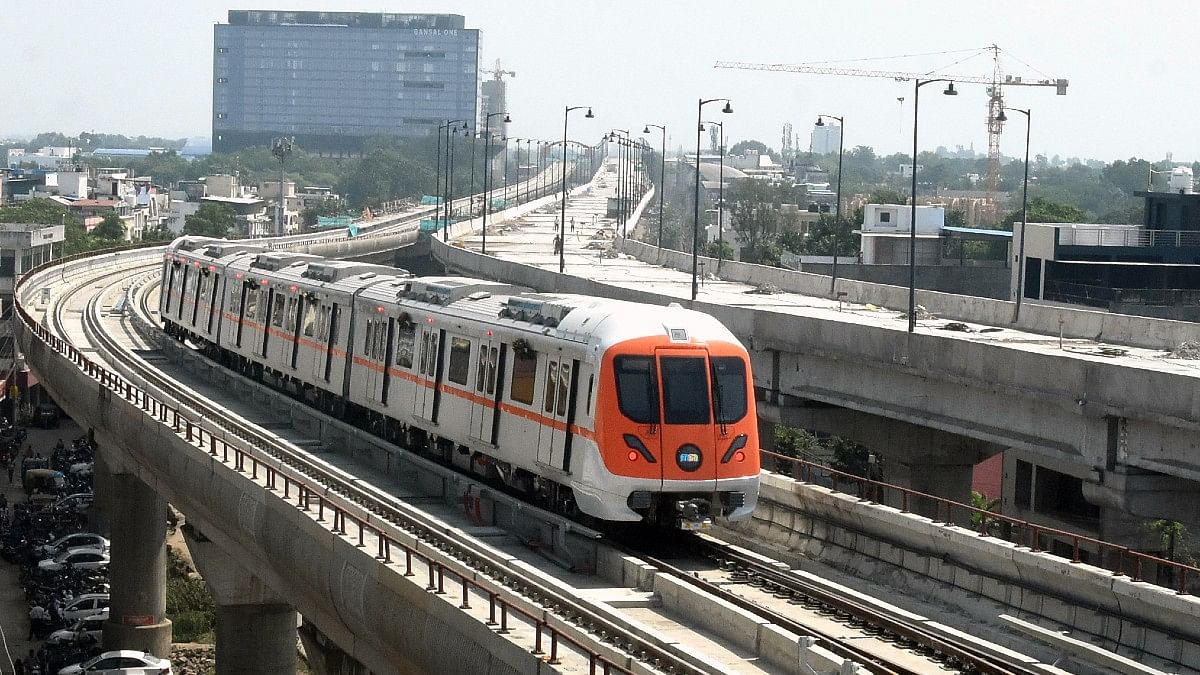- Arvind's Newsletter
- Posts
- Arvind's Newsletter
Arvind's Newsletter
Issue No #1018
1.Indian manufacturing growth slows amid global contraction
While the Indian stock market scaled new peaks in December, activity in the manufacturing sector has lost momentum. The HSBC Purchasing Managers' Index (PMI) came in at an 18-month low of 54.9 in December, down from 56 in November. A reading above 50 indicates an expansion and below 50 a contraction.
The latest print was above the long-term trend but marked the lowest quarterly average (55.5) since Q1FY23, said the PMI survey report. A combination of unfavourable factors played spoilsport for manufacturers. The pace of increase in new orders was the slowest it has been in a year and a half. Even as international orders continued to rise for the 21st consecutive month in December, new export sales and output were muted.
But elsewhere, the scenario was even less inspiring. The headline PMI for global and ASEAN regions contracted in December, meaning the reading was below 50. Operating conditions in the ASEAN region deteriorated on subdued new orders.
2.While yesterday we had cited US Multinational Institutional broker Jeffries as having an optimistic view on India in view of a multi year capex cycle upswing today we provide a contra view in the New York Times (which mostly tends to have a negative view on India) but is nevertheless worth reading as many points it makes are valid. The article by Alex Travelli opines that, “Long-term investments lag in India even though India’s economy is booming. Stock prices are through the roof, and the government’s investment in airports, bridges, roads and clean-energy infrastructure is visible almost everywhere. India’s gross domestic product is expected to increase 6 percent this year — faster than that of the U.S. or China.
But there’s a hitch: Investment by Indian companies is not keeping pace. The money that companies put into the future of their businesses — for things like new machines and factories — is stagnant, and the lull in long-term investment is hampering India’s growth.
At some point soon, the government will need to reduce its extraordinary spending, which could weigh on the economy if private sector money doesn’t pick up.”
3.Why are Indians shunning the country’s shiny new metro lines?
Not enough commuters? Metros have less than 50% projected ridership, says IIT-Delhi report
Ridership on nearly all metro rail networks in India is less than 50 percent of their projected ridership, according to a report by IIT-Delhi and Delhi-based think tank The Infravision Foundation.
According to the report, presented on 4 December at a conference by the Confederation of Indian Industry and The Infravision Foundation, ridership of most metro rail systems in India is 25-30 percent of projected ridership — ridership forecast as mentioned in the Detailed Project Report (DPR) which outlines the intended objectives of a project. The only exception was the Delhi metro, which it said has a ridership equal to 47.45 percent of its projected ridership.
Though the country’s first metro rail project was developed by the Indian Railways and commissioned in Kolkata in 1984, large-scale expansion of the network picked up pace only after the inauguration of the first corridor of the Delhi metro in 2002. According to the report, India has 905 km of operational metro network in nearly 20 cities, including Delhi-NCR. This includes the more than 600 km approved in the past nine years for Kanpur, Surat, Ahmedabad, Bhopal, Indore, Agra, Patna, Kochi, Pune, Nagpur, Lucknow etc.
However, as the report pointed out, most of these operational metro projects have fallen short of achieving the projected ridership.
What explains the reluctance of commuters to hop aboard their shiny new, delightfully air-conditioned, metro carriages? For starters, Indian cities are not particularly dense, which means metro lines are not within walking distance for most commuters. Feeder services, such as bus routes, are rarely integrated with metro lines. So taking the metro to work can be complicated and involve walking, buses, shared autorickshaws and more walking.
A second reason is that metro systems are best suited for longer commutes. In the Indian context, they save time only on trips of 10km or more. But around three-quarters of trips in most Indian cities are under 10km, and half are under 5km. Metro fares also tend to be high by Indian standards. The last time the Delhi metro raised its fares, in 2017, ridership fell by 15%.
4.A purported Israeli drone strike in southern Beirut killed Hamas’ deputy leader, sparking worries of an expansion of the Gaza war into Lebanon and beyond.
Israel did not claim the attack, but Palestinian, Lebanese, and U.S. officials said it was behind the killing. The strike raised concerns that Hezbollah — the Iran-backed Lebanese group that has been trading sporadic fire with Israel since the beginning of the war three months ago — could expand its operations, effectively creating a two-front war which diplomats have desperately sought to avoid: French President Emmanuel Macron urged Israel to avoid escalating the conflict, “particularly in Lebanon.” His warning came as Iran deployed a warship into the Red Sea, potentially emboldening Houthi militants it supports who have been launching attacks on shipping vessels.
Maersk is pausing its shipping in the Red Sea. One of its vessels was attacked by Houthi militants over the weekend, leading one of the world’s biggest shipping giants to divert routes around the Cape of Good Hope in Africa
Washington, meanwhile, issued a once-rare but now increasingly common criticism of Israel, calling on far-right Israeli ministers who suggested resettling Palestinians outside of Gaza to “stop immediately,” a statement swiftly dismissed by one of the ministers behind the proposal. The idea is reportedly actively being discussed, with Hebrew media saying Israeli officials have held talks with several nations — some as far afield as Africa — on taking Gazan migrants.
5.Our Digital Lives Are Too Fragile, opines Julie Lee in the Slate. Some excerpts from her thought provoking article.
“The death of free Evernote is just one example of how our datafied lives are entangled with the fates and whims of tech companies. In August, users on X (formerly known as Twitter) lost three years’ worth of photos. And last month, Google Drive started haemorrhaging files, with some users losing years of data. Our digital life has become increasingly impermanent and is mostly outside of our control, making the threat and pain of digital loss ever more acute.
The days of true digital ownership are long gone. Streaming companies like Spotify and Netflix have changed the status quo, so that instead of permanently owning a media library, we only temporarily license one. Meanwhile, the terms and costs of cloud storage services like Dropbox and iCloud mean that access to your data is always asterisked. In 2012, the file-sharing website Megaupload was shut down by regulators for hosting pirated content; in the process, users with legal data were locked out of their accounts for years, unable to access their files. The situation only gets worse—this year, from bankruptcy to hacks to fires, cloud-based services are dying faster than lanternflies.
Even if we apparently own a digital good, continued access to our digital purchases is not guaranteed. Since the late ’90s, digital rights management has enabled companies to copyright and thus fence off digital goods. DRM is at the root of everyday frustrations like the inability to play music, games, audiobooks, or e-books on a different platform than the vendor used to purchase them. Can’t read a Kobo book on a Kindle? Thank DRM.” Read on
6.Claudine Gay is stepping down from her role at Harvard University, a dramatic about-face from her acclaimed start in July as Harvard’s first black president.
As recently as Dec. 12, she enjoyed the unanimous backing of Harvard Corp., the university’s governing council. Since then, however, new questions have surfaced about her academic work, and a donor revolt over the school’s handling of antisemitism has only worsened.
7.Where to go in 2024: The best places to visit according to CNN Travel
International tourism reached about 90% of pre-pandemic levels in 2023, and the United States issued a record number of passports. And if you visited any popular destination over the summer, you’d probably argue it was more crowded than ever.
So maybe it’s time to look at places that are still largely undiscovered, or alluring in the offseason, or frequently overlooked for their larger first cities or neighbours. Maybe it’s time to head to places that are making it easier for tourists to visit and those that pay close attention to encouraging tourism that’s sustainable.
With those things in mind, CNN Travel chose 24 places to consider as you make your 2024 plans.





